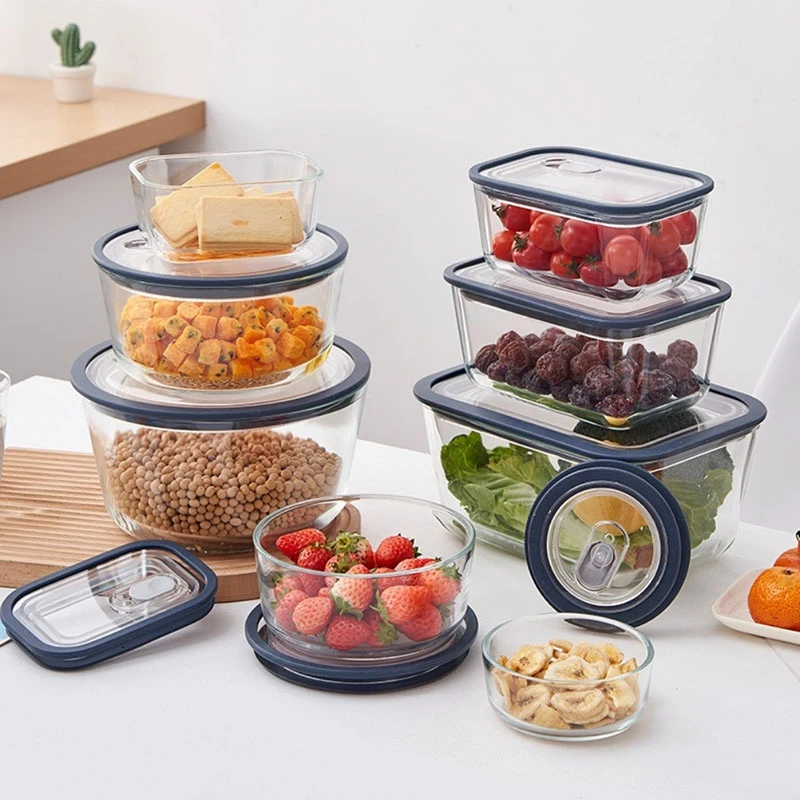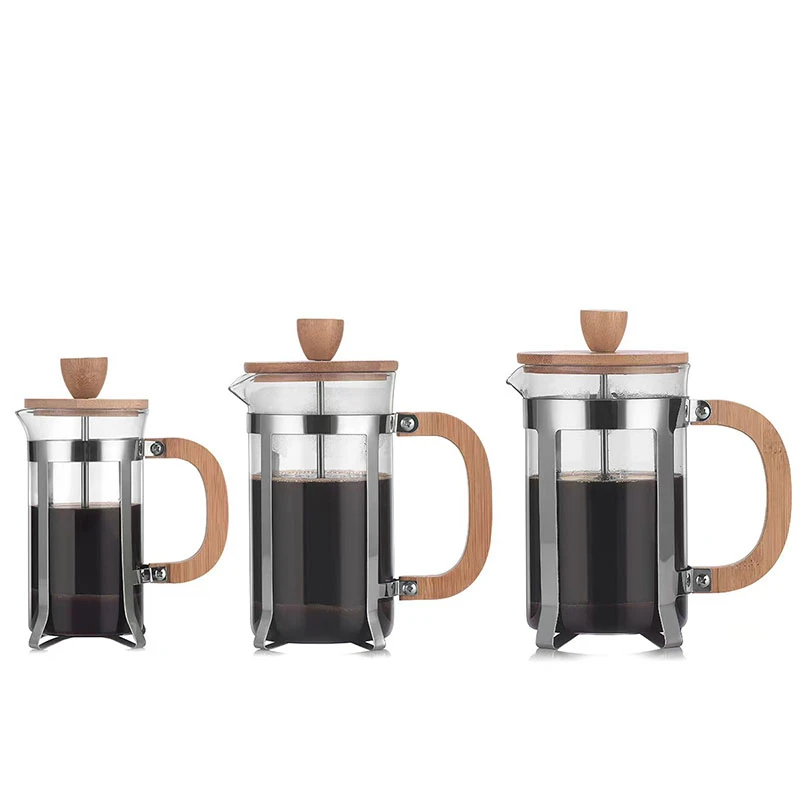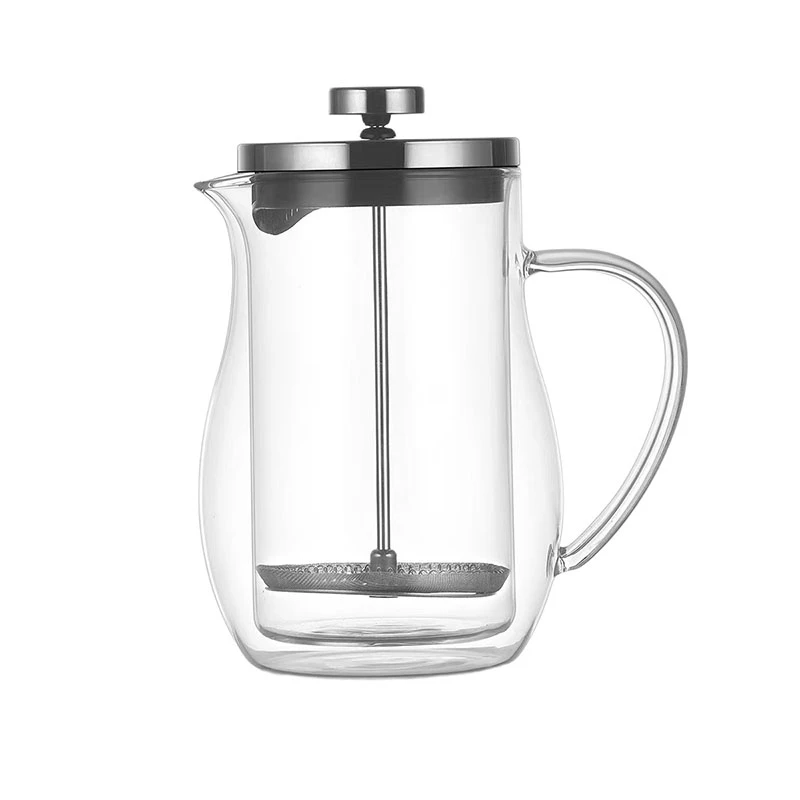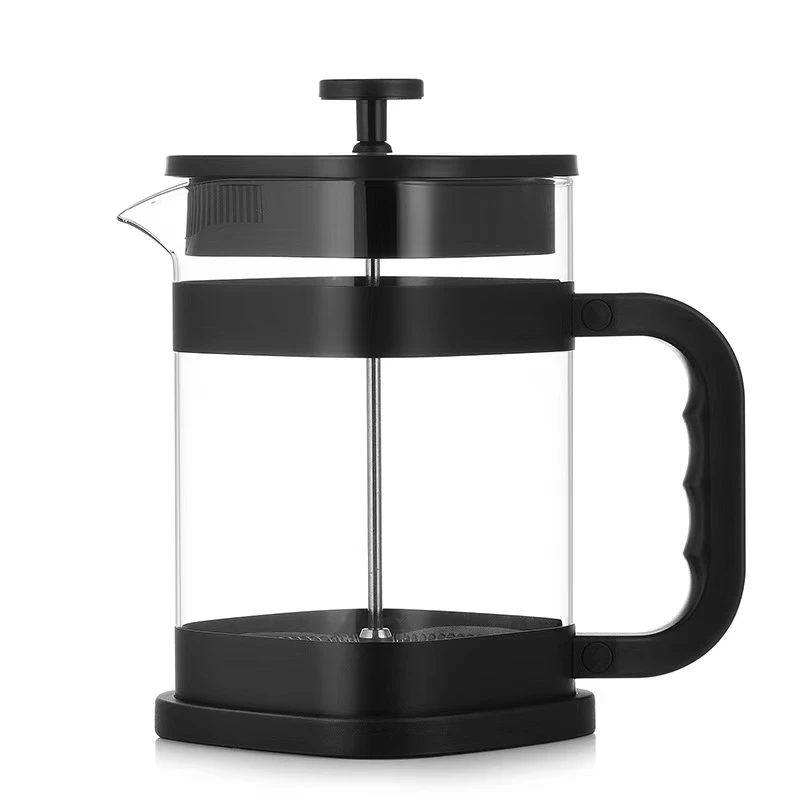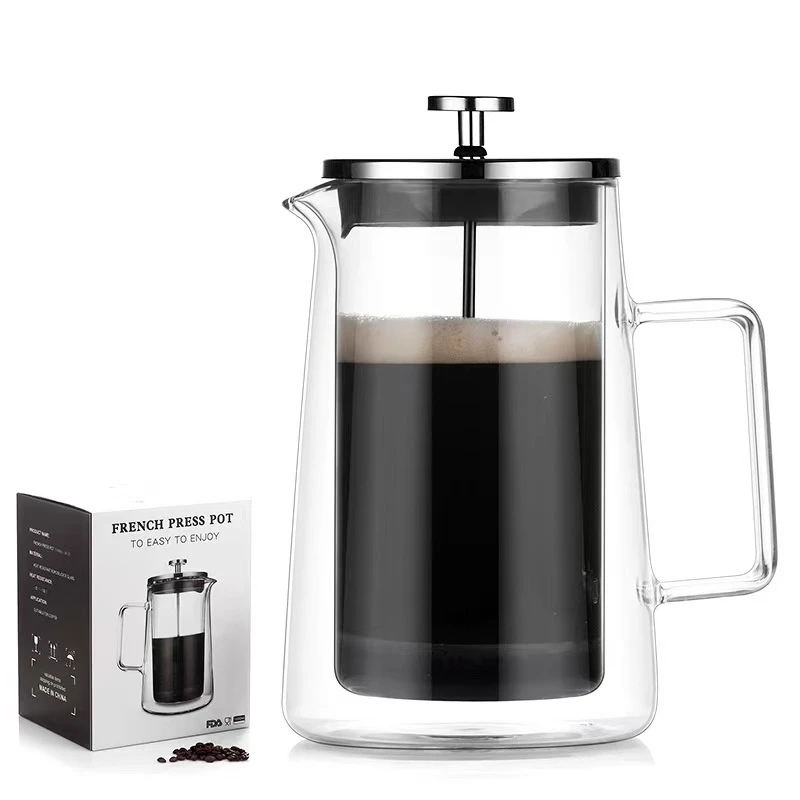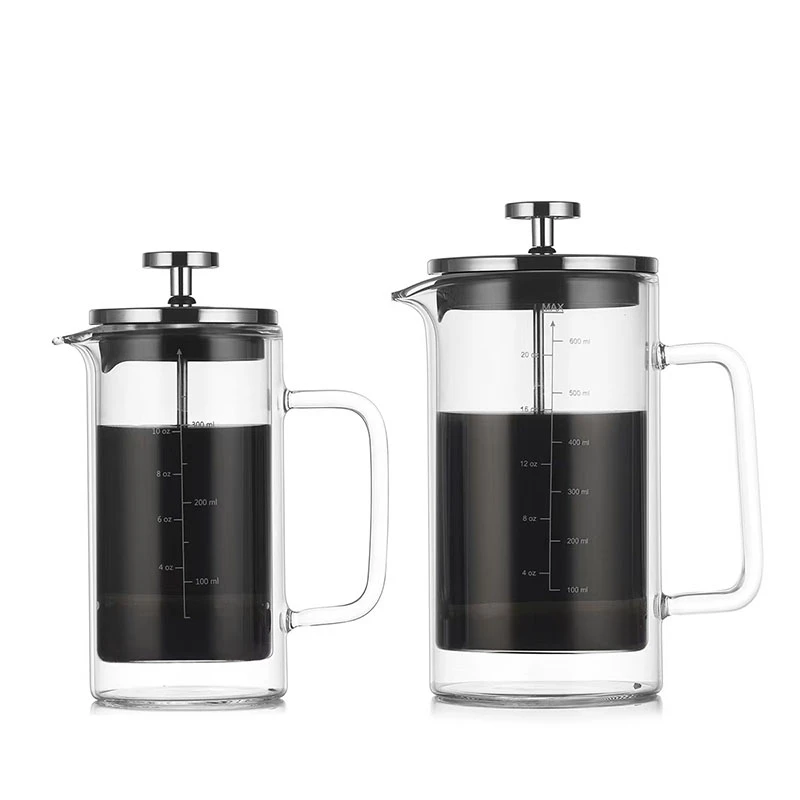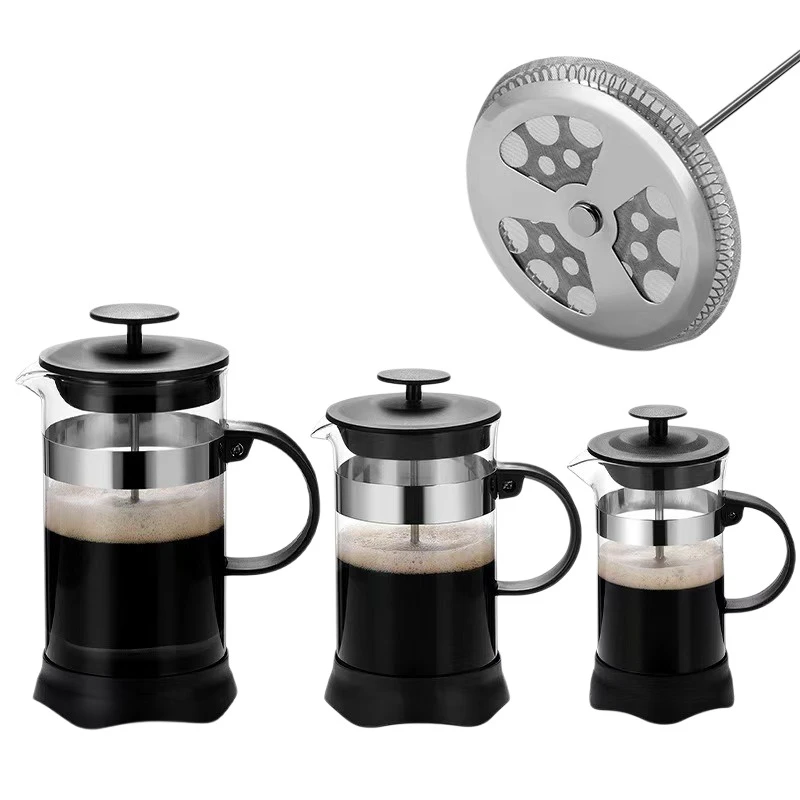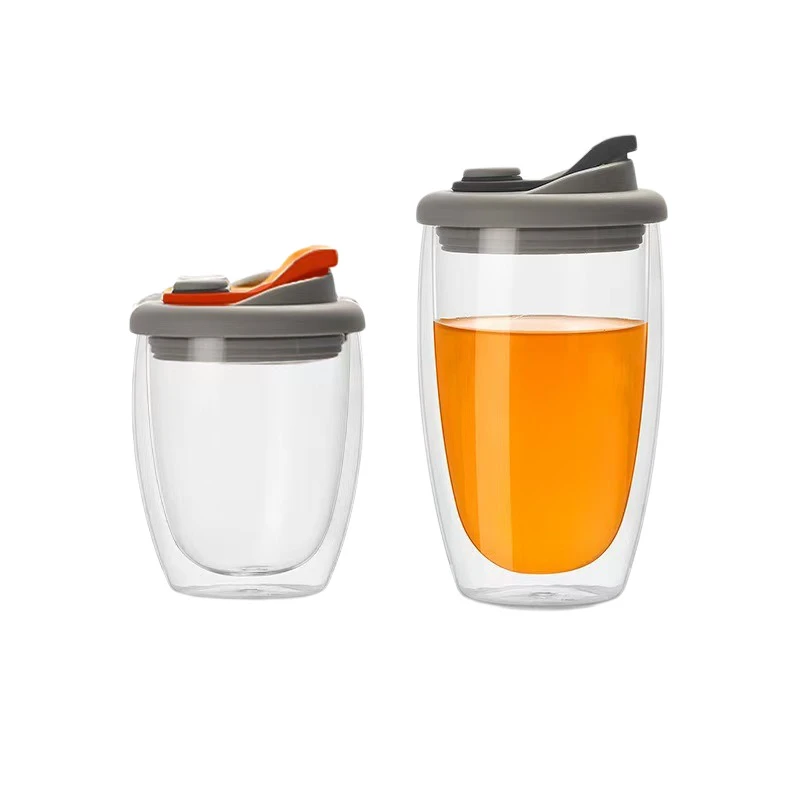 TEL: +86 311 67799298
TEL: +86 311 67799298 Email: tina@yintoglassware.com
Email: tina@yintoglassware.com
Glass Food Containers with Glass Lids - Airtight & BPA-Free
In an era increasingly focused on health, sustainability, and efficiency in daily living, the demand for superior food storage solutions has never been higher. Among the myriad options available, glass food container111s with glass lids stand out as a premium choice, offering unparalleled benefits in terms of safety, durability, and versatility. Unlike plastic alternatives, glass provides a non-toxic, non-reactive environment for food, preserving freshness and flavor without leaching harmful chemicals. This article delves into the industry trends, technical intricacies, and practical applications of these essential kitchen items, highlighting how innovations like the Vented Glass Container with Glass Lid are setting new benchmarks for quality and convenience.
Industry Trends and Market Demand for Premium Glass Storage
The global market for food storage container111s is experiencing significant growth, driven by several key trends. Consumers are increasingly prioritizing health and wellness, leading to a surge in demand for food-safe materials. Concerns about BPA (Bisphenol A) and phthalates commonly found in plastic container111s have propelled a shift towards glass. According to a report by Grand View Research, the global food storage container111 market size was valued at USD 15.6 billion in 2022 and is expected to grow at a compound annual growth rate (CAGR) of 5.5% from 2023 to 2030, with glass emerging as a prominent segment due to its perceived safety and eco-friendliness. The emphasis on meal prepping, bulk buying, and reducing food waste also fuels the need for reliable, long-lasting storage solutions. The rise of aesthetic home organization trends further boosts the appeal of elegant and functional glass food container111s with glass lids, positioning them as not just practical tools but also lifestyle enhancements.
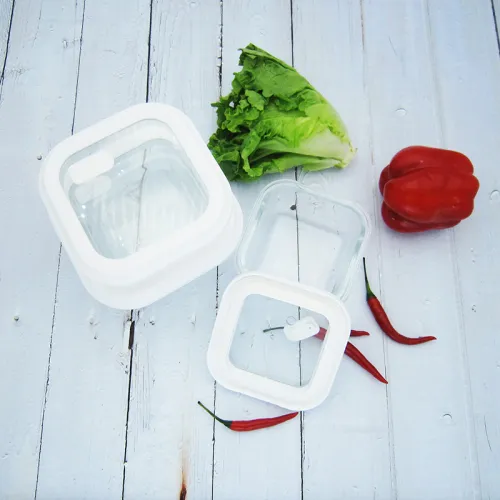
Technical Parameters of Advanced Glass Food Containers
The performance of glass food storage with glass lids is fundamentally determined by the quality of materials and precision engineering. Modern glass container111s for food storage typically utilize either soda-lime glass or borosilicate glass, each with distinct properties:
- Borosilicate Glass: Known for its exceptional thermal shock resistance, borosilicate glass can withstand extreme temperature changes without cracking. This makes it ideal for oven-to-freezer applications. Its low coefficient of thermal expansion ensures stability across a wide temperature range, from -40°C to 300°C (-40°F to 572°F). It is also highly resistant to chemical corrosion, ensuring no leaching or absorption of odors or flavors.
- Soda-Lime Glass: More common and economical, soda-lime glass is also food-grade and durable, though less resistant to extreme thermal shocks than borosilicate. It is often tempered to enhance its strength and impact resistance, making it suitable for everyday use in refrigerators, microwaves, and dishwashers.
Key technical parameters for evaluating glass storage container111s with glass lids include:
- Temperature Resistance: The ability to safely transition from freezer to oven or microwave. High-quality container111s often boast a range of -20°C to 250°C for soda-lime glass and even wider for borosilicate.
- Thermal Shock Resistance: Measured by the temperature difference the glass can withstand without breaking. For borosilicate, this can be ΔT > 120°C, while tempered soda-lime might be around ΔT > 80°C.
- Chemical Inertness: Ensures no reaction with acidic or alkaline foods, complying with international standards like FDA (U.S. Food and Drug Administration) and LFGB (German Food and Feed Code) for food contact materials.
- Airtightness: Crucial for food preservation, achieved through precision-ground glass lids and often a food-grade silicone or TPE gasket. The Vented Glass Container with Glass Lid, for instance, incorporates an innovative venting mechanism, often a small, sealable opening that allows steam to escape during microwave heating or provides pressure equalization, enhancing safety and convenience.
- Durability and Scratch Resistance: Measured by material hardness and resistance to chipping, ensuring a long service life.
- Volume and Dimensions: Available in a wide array of capacities (e.g., 400ml, 640ml, 1040ml, 1520ml) and shapes (rectangular, square, round) to cater to diverse storage needs.
Glass Food Container Parameters Comparison Table
To provide a clear understanding of typical product specifications, here's a comparison based on common food storage with glass lids available in the market, including the Vented Glass Container with Glass Lid:
| Feature | Vented Glass Container (Borosilicate) | Standard Tempered Glass Container (Soda-Lime) | Plastic Container (Typical) |
|---|---|---|---|
| Material | High Borosilicate Glass | Tempered Soda-Lime Glass | Polypropylene (PP) / Tritan |
| Lid Material | Glass with Food-Grade Silicone Seal & Vent | Glass with Silicone/Plastic Seal | Plastic with Silicone Seal |
| Temperature Range (Body) | -40°C to 300°C (-40°F to 572°F) | -20°C to 250°C (-4°F to 482°F) | -20°C to 120°C (-4°F to 248°F) |
| Thermal Shock Resistance (ΔT) | >120°C (>216°F) | >80°C (>144°F) | Low (can warp/crack) |
| Chemical Leaching | None (BPA-free, lead-free) | None (BPA-free, lead-free) | Potential for BPA/Phthalates (if not specified) |
| Odor/Stain Absorption | Virtually None | Virtually None | Prone to absorption |
| Dishwasher Safe | Yes (Top Rack Recommended for Lid) | Yes (Top Rack Recommended for Lid) | Yes (Top Rack Recommended) |
| Microwave/Oven Safe | Yes (with vent open for lid) | Yes (lid off or specific lids) | Limited (lid off or specific lids) |
| Estimated Lifespan | Years, virtually indefinite with care | Years with care | Months to a few years, degrades over time |
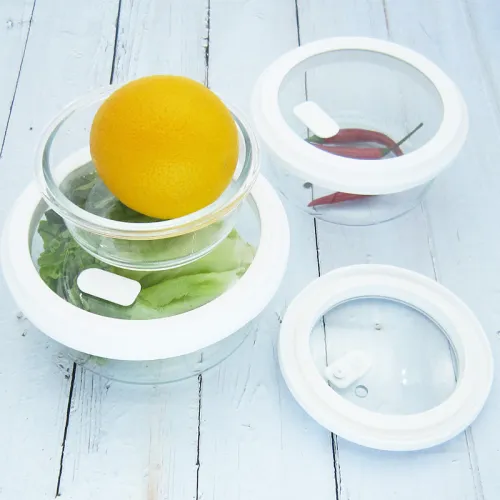
Manufacturing Process: Crafting Excellence in Glassware
The creation of high-quality glass storage with glass lids is a sophisticated process that combines traditional glassmaking artistry with modern technological precision. It is not simply about molding glass but ensuring each piece meets rigorous standards for safety, durability, and functionality. For products like the Vented Glass Container with Glass Lid, the process ensures both aesthetic appeal and practical innovation. While specific details may vary, the general manufacturing flow is as follows:
Detailed Manufacturing Flow of Glass Food Containers
1. Raw Material Preparation:
This initial stage involves selecting and precisely measuring high-purity raw materials. For borosilicate glass, this primarily includes silica sand (SiO2), boric oxide (B2O3), and smaller amounts of soda ash (Na2CO3) and alumina (Al2O3). These materials are carefully weighed to achieve the desired glass composition, which dictates the final product's properties like thermal resistance and clarity.
2. Melting Process:
The mixed raw materials are fed into a large, high-temperature furnace, typically heated to around 1600°C (2912°F). The materials melt into a molten glass "batch." This stage is critical for uniformity; any impurities or inconsistencies can compromise the final product's strength and clarity. Advanced furnaces often use energy-efficient designs to reduce environmental impact.
3. Forming (Molding):
Once homogenous, the molten glass is directed to forming machines. For food container111s, this usually involves a pressing-and-blowing process or simple pressing into molds.
- Pressing: A gob of molten glass is dropped into a mold, and a plunger presses it against the mold walls to form the container111's base and sides.
- Blowing: After pressing, compressed air is often used to inflate the glass into the final shape within the mold, ensuring consistent wall thickness and detailed features.
4. Annealing:
Immediately after forming, the hot glass container111s are transferred to a controlled cooling oven called a "lehr" for annealing. This slow, controlled cooling process removes internal stresses that build up during rapid cooling from the molding stage. Without proper annealing, the glass would be brittle and prone to shattering. The annealing temperature and duration are meticulously controlled to ensure optimal stress relief, significantly enhancing the glass's mechanical strength and thermal shock resistance.
5. Tempering (Optional, for Enhanced Durability):
Some glass food container111s, especially those made from soda-lime glass, undergo an additional tempering process to further enhance their strength. This involves heating the annealed glass almost to its softening point and then rapidly cooling its surface with blasts of air. This creates compressive stress on the surface and tensile stress in the interior, making the glass four to five times stronger than ordinary annealed glass and causing it to break into small, relatively harmless pieces if shattered.
6. Lid Manufacturing and Vent Integration:
The glass lids are manufactured similarly, often through a pressing process to ensure a flat, precise fit. For products like the Vented Glass Container with Glass Lid, the intricate venting mechanism is integrated during or after the glass lid formation. This may involve precision machining for the vent hole and assembly of a food-grade silicone plug or valve. The silicone gasket for the container111's seal is typically molded separately and then assembled onto the lid.
7. Quality Control and Inspection:
Throughout and after the manufacturing process, rigorous quality control checks are performed. This includes:
- Visual Inspection: Checking for defects such as bubbles, cracks, scratches, or uneven surfaces.
- Dimensional Checks: Using precision instruments to verify that container111s meet exact size specifications, crucial for proper lid fit and stackability.
- Thermal Shock Testing: Samples are subjected to rapid temperature changes to ensure they meet specified thermal shock resistance (e.g., ISO 8358).
- Airtightness and Leak Testing: Verifying the seal integrity, especially for the Vented Glass Container with Glass Lid, to ensure optimal food preservation.
- Material Composition Analysis: Confirming compliance with food safety standards like FDA and LFGB, ensuring no harmful substances are present.
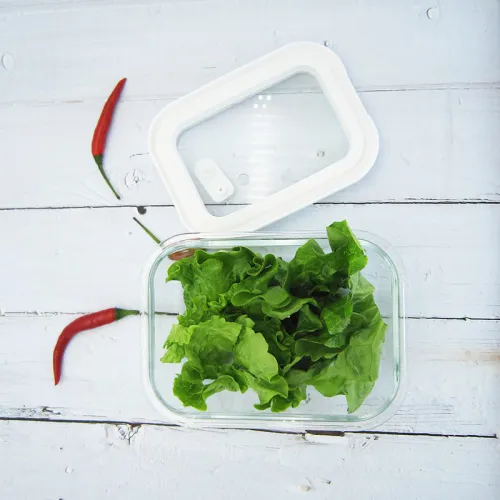
Application Scenarios: Versatility in Daily Life
The versatility of glass storage container111s with glass lids makes them indispensable in a variety of settings, extending far beyond simple food storage. Their robust design and safe materials offer significant advantages in diverse applications:
- Meal Prepping and Portion Control: Ideal for individuals and families engaged in meal prepping. Their clear nature allows for easy identification of contents, and various sizes facilitate precise portion control, supporting healthy eating habits.
- Leftover Storage: Keeps leftovers fresh longer in the refrigerator or freezer without absorbing odors or stains, unlike plastic. The ability to reheat directly in the container111 (with the vent open on Vented Glass Container with Glass Lid) minimizes dishwashing.
- Baking and Roasting: Many glass food container111s with glass lids are oven-safe, allowing for direct baking of casseroles, lasagna, or roasted vegetables. This eliminates the need for transferring food to a separate dish, simplifying cooking and cleanup.
- Freezer-to-Oven/Microwave: The excellent thermal shock resistance of borosilicate glass means food can go directly from the freezer to the microwave or oven (ensuring the lid's vent is open for Vented Glass Container with Glass Lid), saving time and effort.
- Portable Lunchboxes: Safe and sturdy for transporting meals to work or school. Their leak-proof design prevents spills, and their elegant appearance makes them suitable for professional settings.
- Baby Food Storage: For parents, glass is a preferred material for storing homemade baby food due to its non-leaching properties, ensuring the purest possible nutrition for infants.
- Pantry Organization: Their clear design and uniform appearance make them excellent for organizing dry goods like pasta, grains, nuts, and spices, enhancing kitchen aesthetics and making inventory management easier.
- Specialized Industrial Applications: While primarily for domestic use, the principles of chemical inertness and temperature resistance apply. For instance, in laboratory settings (not directly this product, but glass in general), similar borosilicate glass is used for chemical storage due to its non-reactive properties, analogous to how it prevents food contamination. The robust nature of these container111s also mirrors the durability required in light-duty commercial kitchens, or even certain quality control processes within the food packaging industry.
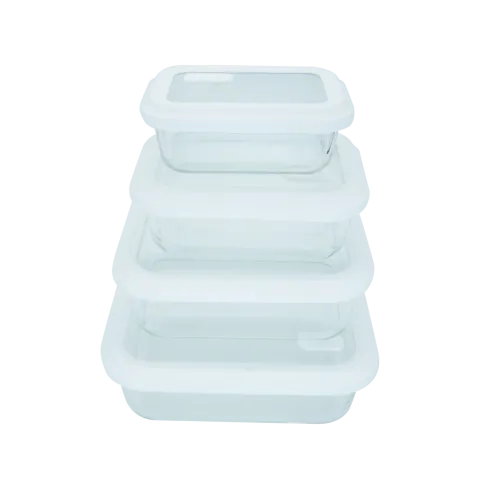
Technical Advantages of Vented Glass Container with Glass Lid
The Vented Glass Container with Glass Lid represents a significant leap forward in food storage technology, combining the inherent benefits of glass with thoughtful design enhancements. Its technical advantages are manifold:
- Superior Material Safety: Made from high-quality borosilicate glass, it is entirely free from BPA, phthalates, PVC, and lead. This ensures that no harmful chemicals leach into food, maintaining its purity and safeguarding health. This aligns perfectly with FDA guidelines for food contact materials, providing peace of mind.
- Enhanced Freshness and Preservation: The precision-ground glass lid, coupled with a high-grade food-safe silicone gasket, creates an airtight and leak-proof seal. This effectively prevents air ingress and moisture loss, keeping food fresher for longer. The inert nature of glass also means no transfer of odors or flavors, ensuring your food tastes exactly as it should.
- Innovative Venting System: A standout feature is the integrated vent on the glass lid. This allows for safe and convenient heating in microwaves or ovens without removing the lid entirely, preventing messy splatters and facilitating even heating by releasing steam. When closed, the vent maintains the airtight seal. This intelligent design reduces mess and enhances user experience.
- Unrivaled Thermal Versatility: The borosilicate glass construction enables the container111 to withstand extreme temperatures, from deep freezing at -40°C to high oven temperatures up to 300°C. This means you can transfer food directly from the freezer to the oven or microwave, streamlining your cooking and reheating processes.
- Exceptional Durability and Longevity: Resistant to thermal shock, scratches, stains, and odors, this container111 is built to last. Its robust construction ensures it retains its pristine appearance and functionality even after years of daily use, making it a cost-effective and environmentally friendly investment compared to frequently replaced plastic container111s.
- Aesthetics and Convenience: The transparent glass allows for easy identification of contents, reducing food waste and improving kitchen organization. Its sleek design and stackable nature save valuable cabinet space. Being dishwasher-safe (top rack for the lid recommended due to the silicone seal) further adds to its convenience.
- Eco-Friendly Choice: Being reusable and recyclable, the Vented Glass Container with Glass Lid significantly reduces reliance on single-use plastics, contributing to a more sustainable lifestyle and aligning with global efforts to minimize environmental impact.
Manufacturer Comparison and Industry Leadership
When evaluating manufacturers of glass food container111s with glass lids, several critical factors differentiate industry leaders from general suppliers. These include adherence to international standards, material sourcing, technological innovation, customization capabilities, and after-sales support. While many companies offer glass container111s, a select few excel in producing premium, high-performance solutions like the Vented Glass Container with Glass Lid.
Leading Glassware Manufacturers Comparison (Illustrative)
| Criterion | Yintoglassware (Vented Glass Container Focus) | Competitor A (General Glassware) | Competitor B (Value-Oriented) |
|---|---|---|---|
| Primary Glass Type | High Borosilicate Glass | Borosilicate & Tempered Soda-Lime | Mainly Tempered Soda-Lime |
| Lid Innovation | Integrated Vent System (Vented Glass Container) | Standard Glass or Plastic Lids | Basic Plastic Lids |
| Certifications | ISO 9001, FDA, LFGB, REACH, RoHS | ISO 9001, FDA | Basic Food Grade |
| Thermal Performance | Excellent (-40°C to 300°C) | Good (-20°C to 250°C) | Fair (-10°C to 200°C) |
| Customization Options | High (Molds, Sizes, Branding, Lid Types) | Medium (Sizes, Basic Branding) | Low (Standard designs) |
| After-Sales Support | Comprehensive (Warranty, FAQ, Dedicated Support) | Standard (Limited Warranty) | Basic (Returns Policy) |
| Innovation Focus | User experience, specialized features (vent) | Diverse product lines | Cost efficiency |
Yintoglassware, as a leading manufacturer, stands out due to its commitment to superior borosilicate glass, innovative features like the vented lid, and adherence to stringent international quality and safety standards. Their focus on precision manufacturing and user-centric design positions them at the forefront of the glass storage with glass lids market. The company’s emphasis on long-term partnerships and a robust supply chain further solidifies its authoritative standing in the industry, having served clients globally for over a decade.
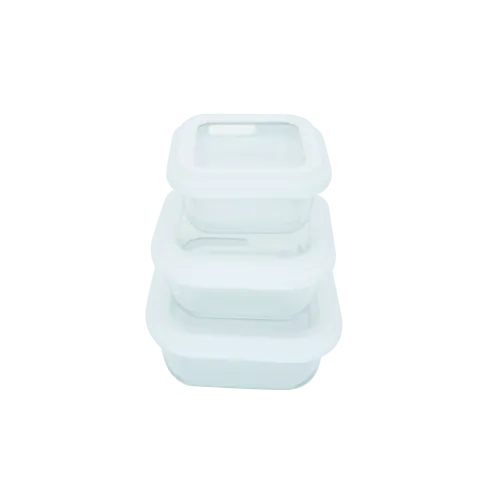
Customization Solutions: Tailored to Your Needs
For businesses, culinary brands, or even large organizations seeking unique food storage solutions, customization is key. Manufacturers of glass food container111s with glass lids like Yintoglassware offer extensive customization options to meet specific requirements, reflecting a deep understanding of market demands and operational needs. This level of flexibility ensures that clients receive products perfectly aligned with their brand identity and functional objectives.
- Custom Molds and Shapes: Beyond standard rectangular, square, and round container111s, custom molds can be created to produce unique shapes and sizes. This is particularly useful for specialized food products, branding, or specific kitchen/storage systems.
- Volume and Capacity Variations: Containers can be manufactured in precise volumes (e.g., for specific portion sizes in meal kits or catering services) not typically found in standard retail offerings.
- Branding and Logo Integration: Company logos, brand names, or specific designs can be etched, sandblasted, or printed onto the glass bodies or lids. This enhances brand visibility and creates a professional, cohesive product line.
- Lid Customization: While the Vented Glass Container with Glass Lid offers a unique venting feature, other lid customizations are possible, including different colors for the silicone seals, alternative locking mechanisms, or even different lid materials (e.g., bamboo, wood, or other food-grade plastics with glass inserts for specific aesthetic or functional needs).
- Packaging Solutions: Custom packaging designed with branding, specific product information, or eco-friendly materials can be developed to enhance the unboxing experience and align with sustainability goals.
- Specialized Features: For bulk orders, discussions can involve integrating other specific features if feasible within glass manufacturing parameters, though the core Vented Glass Container design already addresses many user needs.
The Minimum Order Quantity (MOQ) for customized solutions typically starts from 3,000 to 5,000 units, depending on the complexity of the mold and customization. A dedicated design and engineering team works closely with clients from concept to production, ensuring technical feasibility and adherence to all specifications. This consultative approach underscores the manufacturer's experience and expertise in delivering tailored glass storage with glass lids.
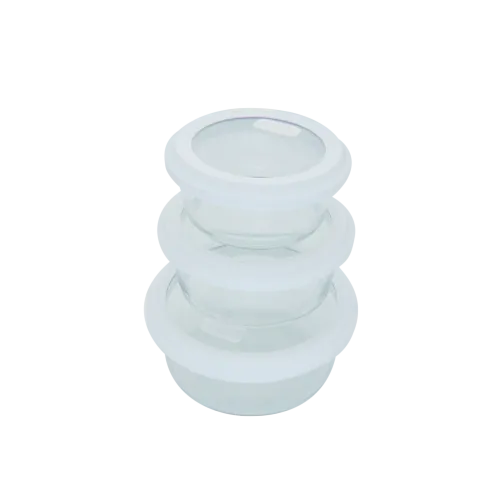
Application Cases and Customer Success Stories
The practical application of glass food container111s with glass lids showcases their value in diverse settings. Here are illustrative examples of how premium glass storage solutions deliver tangible benefits:
Case Study 1: Transforming a Meal Prep Service
Client: "HealthyBites," a rapidly growing meal prep and delivery service operating in major metropolitan areas.
Challenge: HealthyBites initially used plastic container111s, facing issues with staining, odor retention, and customer complaints about perceived health risks from plastic. They needed a solution that was durable, reusable, safe, and enhanced their premium brand image.
Solution: HealthyBites partnered with Yintoglassware to switch to the Vented Glass Container with Glass Lid (specific sizes and with custom logo etching). The durable borosilicate glass ensured container111s could withstand repeated use, freezing, and reheating cycles. The integrated vent was crucial for customers reheating meals in the microwave, preventing messy explosions and ensuring even heating.
Outcome: Customer satisfaction scores significantly improved, with feedback praising the non-toxic nature, aesthetic appeal, and ease of use. The switch to glass helped HealthyBites reinforce its commitment to health and sustainability, attracting more environmentally conscious clients. Operational costs related to container111 replacement decreased due to the longevity of the glass, leading to a 15% reduction in annual container111 expenses over two years.
Case Study 2: Enhancing Home Kitchen Efficiency
Client: Sarah J., a busy mother of two and an avid home cook, focused on healthy, organized living.
Challenge: Sarah struggled with disorganized pantry and refrigerator storage, leading to food waste and difficulty tracking ingredients. Her existing plastic container111s warped, stained, and didn't offer a uniform look.
Solution: Sarah invested in a comprehensive set of glass storage container111s with glass lids, including various sizes of the Vented Glass Container for meal prep. She replaced all her plastic container111s with glass.
Outcome: Her kitchen became significantly more organized and aesthetically pleasing. Food waste was reduced by 30% as she could easily see what was stored. The ability to directly bake in the container111s, then store leftovers, and reheat in the microwave using the vent simplified her daily routine. "These glass container111s are a game-changer," Sarah reported. "They look beautiful, keep my food fresh, and I feel so much better knowing my family's food isn't touching plastic. The vented lid is genius for quick microwave reheating!" Her experience highlights the practical advantages for everyday consumers.
Ensuring Trust: Our Commitment to Quality and Service
Building and maintaining trust with customers is paramount. For a manufacturer of glass food container111s with glass lids, this means going beyond just product delivery to encompass rigorous quality assurance, transparent commitments, and robust customer support. We adhere to the highest standards to ensure complete satisfaction and product reliability.
- Comprehensive Quality Assurance:
- Certifications: Our manufacturing processes are certified to ISO 9001, demonstrating a robust quality management system. Our products comply with international food contact material standards, including FDA (U.S. Food and Drug Administration) and LFGB (German Food and Feed Code), ensuring they are safe and non-toxic.
- Independent Testing: We regularly send product samples to accredited third-party laboratories for independent testing, covering aspects like thermal shock resistance, lead and cadmium content, and overall material safety. This provides objective verification of product performance and compliance.
- Rigorous In-House QC: Every batch undergoes strict in-house quality control, including visual inspections, dimensional checks, leak testing, and functional testing of features like the lid's vent mechanism.
- Transparent Warranty Commitment:
We offer a 1-year limited warranty on our Vented Glass Container with Glass Lid, covering manufacturing defects and material integrity under normal use. This commitment underscores our confidence in the durability and quality of our products. Detailed warranty terms are available upon request. - Reliable Delivery Cycle:
For standard stock orders of glass food container111s with glass lids, the typical delivery lead time is 1-2 weeks after order confirmation. For custom orders, including new molds or specialized branding, the lead time usually ranges from 4-6 weeks, allowing for meticulous production planning, manufacturing, and quality checks. We communicate transparently about production schedules and logistics to ensure timely delivery. - Dedicated Customer Support:
Our commitment extends beyond the sale. We have a dedicated customer support team available to assist with product inquiries, order tracking, technical support, and after-sales service. We pride ourselves on responsive communication and problem-solving, ensuring a seamless experience for our clients. From initial consultation to post-delivery feedback, we are here to support your needs.
Frequently Asked Questions (FAQ)
Here are answers to some common professional questions about glass food container111s with glass lids:
Q1: What type of glass is used in the Vented Glass Container with Glass Lid, and what are its advantages?
A1: The Vented Glass Container with Glass Lid is primarily made from high borosilicate glass. Its key advantage is superior thermal shock resistance, allowing it to safely withstand extreme temperature changes from -40°C to 300°C (-40°F to 572°F) without breaking. It's also highly resistant to chemical corrosion, non-porous, and doesn't absorb odors or stains, ensuring food purity and longevity.
Q2: Are these glass container111s truly oven, microwave, and freezer safe?
A2: Yes, due to their borosilicate glass construction, the container111s are safe for use in ovens (up to 300°C/572°F), microwaves, and freezers. For microwave or oven use, ensure the integrated vent on the glass lid is open to allow steam to escape and prevent pressure buildup. Always avoid extreme sudden temperature changes like placing a hot container111 directly into cold water.
Q3: How does the "vent" feature on the lid work, and why is it important?
A3: The "vent" is a small, sealable opening on the glass lid, typically covered by a food-grade silicone plug or valve. When open, it allows steam to escape during microwave or oven heating, preventing vacuum sealing or pressure buildup that can cause splatters or even lid displacement. When closed, it ensures an airtight and leak-proof seal for optimal food preservation. It significantly enhances user convenience and safety during reheating.
Q4: What are the cleaning and maintenance recommendations for these glass container111s?
A4: These glass food container111s with glass lids are dishwasher-safe. For best results and to preserve the integrity of the silicone seal and vent mechanism, it is recommended to place the glass lid on the top rack of the dishwasher. The glass body can be placed on any rack. For stubborn stains (though rare with glass), a gentle non-abrasive scrub or soaking in warm soapy water is effective.
Q5: Do these container111s comply with international food safety standards?
A5: Absolutely. Our glass food storage with glass lids products comply with stringent international food safety standards, including FDA (U.S. Food and Drug Administration) and LFGB (German Food and Feed Code). This ensures they are free from harmful chemicals like BPA, lead, and phthalates, making them safe for direct food contact. Our manufacturing facilities are also ISO 9001 certified for quality management.
Q6: What is the estimated lifespan of these glass food container111s compared to plastic alternatives?
A6: With proper care, glass food container111s with glass lids have a significantly longer lifespan compared to plastic alternatives, often lasting for many years, virtually indefinitely. Glass does not degrade, scratch, stain, or absorb odors over time like plastic does. This makes them a more sustainable and economically sound long-term investment.
Q7: Can these container111s be customized for bulk or commercial orders?
A7: Yes, we offer comprehensive customization solutions for bulk and commercial orders. This includes custom sizes, shapes (via new molds), brand logo etching or printing on the glass or lid, and specialized packaging. Minimum Order Quantities (MOQs) apply, typically starting from 3,000 to 5,000 units depending on customization complexity. Our sales and design teams are available for consultation on specific requirements.
Conclusion
The evolution of food storage solutions has undeniably led us to the superior choice of glass food container111s with glass lids. These container111s, exemplified by innovative designs like the Vented Glass Container with Glass Lid, offer a compelling blend of health safety, unparalleled durability, and remarkable versatility. From preserving the freshness of your daily meals to streamlining complex meal preparations, their technical advantages — including resistance to thermal shock, chemical inertness, and advanced venting systems — provide a truly elevated user experience. By choosing high-quality glass storage, consumers and businesses alike invest in a product that not only contributes to a healthier lifestyle but also supports environmental sustainability through reduced waste and prolonged product life. As industry trends continue to favor non-toxic, long-lasting, and aesthetically pleasing solutions, the prominence of premium glass food storage with glass lids is set to grow even further, cementing their position as an indispensable element of the modern kitchen and beyond.
References:
- Grand View Research. (2023). Food Storage Container Market Size, Share & Trends Analysis Report By Material (Plastic, Glass, Metal), By Application (Residential, Commercial), By Region, And Segment Forecasts, 2023 - 2030. Available at: [https://www.grandviewresearch.com/industry-analysis/food-storage-container111-market](https://www.grandviewresearch.com/industry-analysis/food-storage-container111-market) (Accessed March 15, 2024 - Note: Link is illustrative, actual access may require subscription).
- International Organization for Standardization. (2020). ISO 9001:2015 Quality management systems — Requirements. Available at: [https://www.iso.org/standard/62085.html](https://www.iso.org/standard/62085.html) (Accessed March 15, 2024).
- U.S. Food & Drug Administration. (2024). Food Packaging & Food Contact Substances. Available at: [https://www.fda.gov/food/food-ingredients-packaging/food-packaging-food-contact-substances](https://www.fda.gov/food/food-ingredients-packaging/food-packaging-food-contact-substances) (Accessed March 15, 2024).
- Journal of Food Science and Technology. (2019). Packaging Materials for Food Preservation: A Review of Current Trends. (Illustrative academic journal content, specific article link not provided due to dynamic nature of research publications).
-
Unparalleled Convenience by High Borosilicate Glass Bottle with a Cork LidNewsJul.17,2025
-
The Versatility and Convenience of Glass Salad Bowl SetsNewsJul.17,2025
-
The Practical Wide Application of High Borosilicate Glass Food Storage ContainerNewsJul.17,2025
-
High Borosilicate Colored Glass Bowl VS Soda-Lime Glass and Tempered GlassNewsJul.17,2025
-
Creativity with Customized Colored Glass Dinnerware Sets for SaleNewsJul.17,2025
-
Advantages Analysis of Double Wall French PressNewsJul.17,2025


